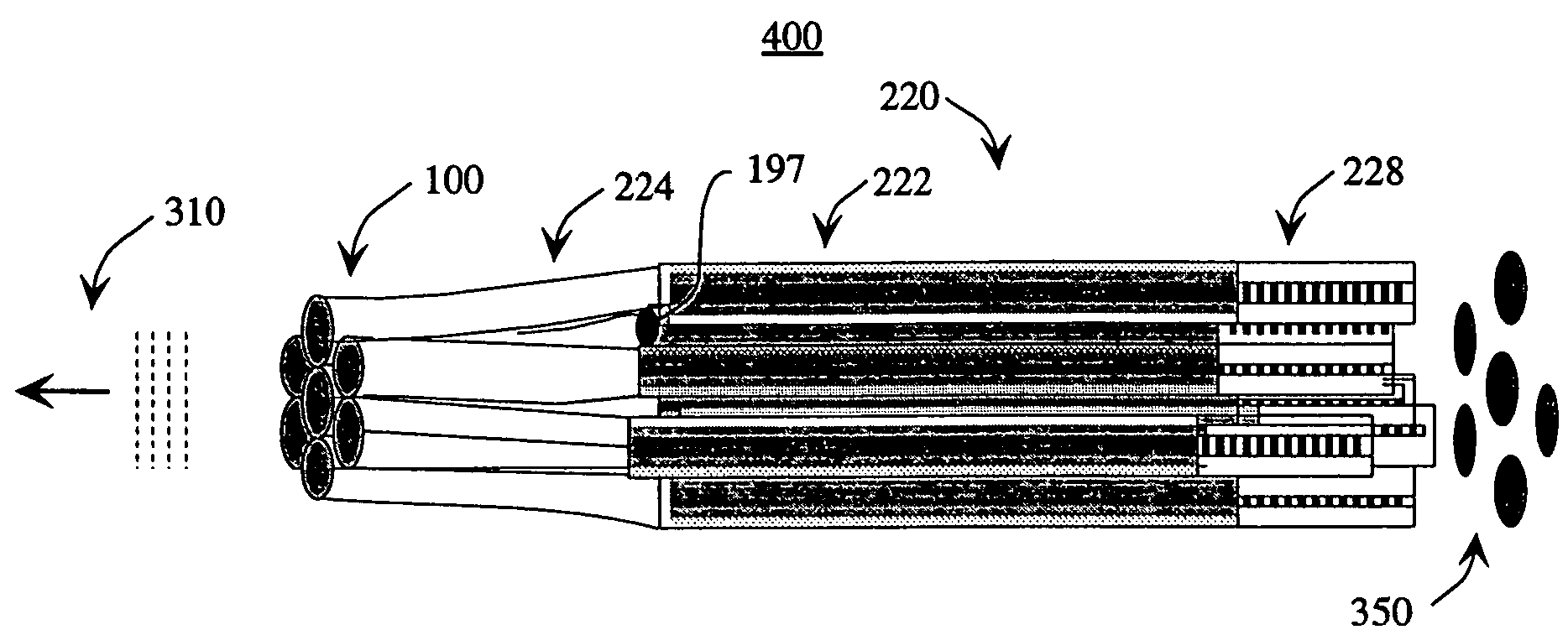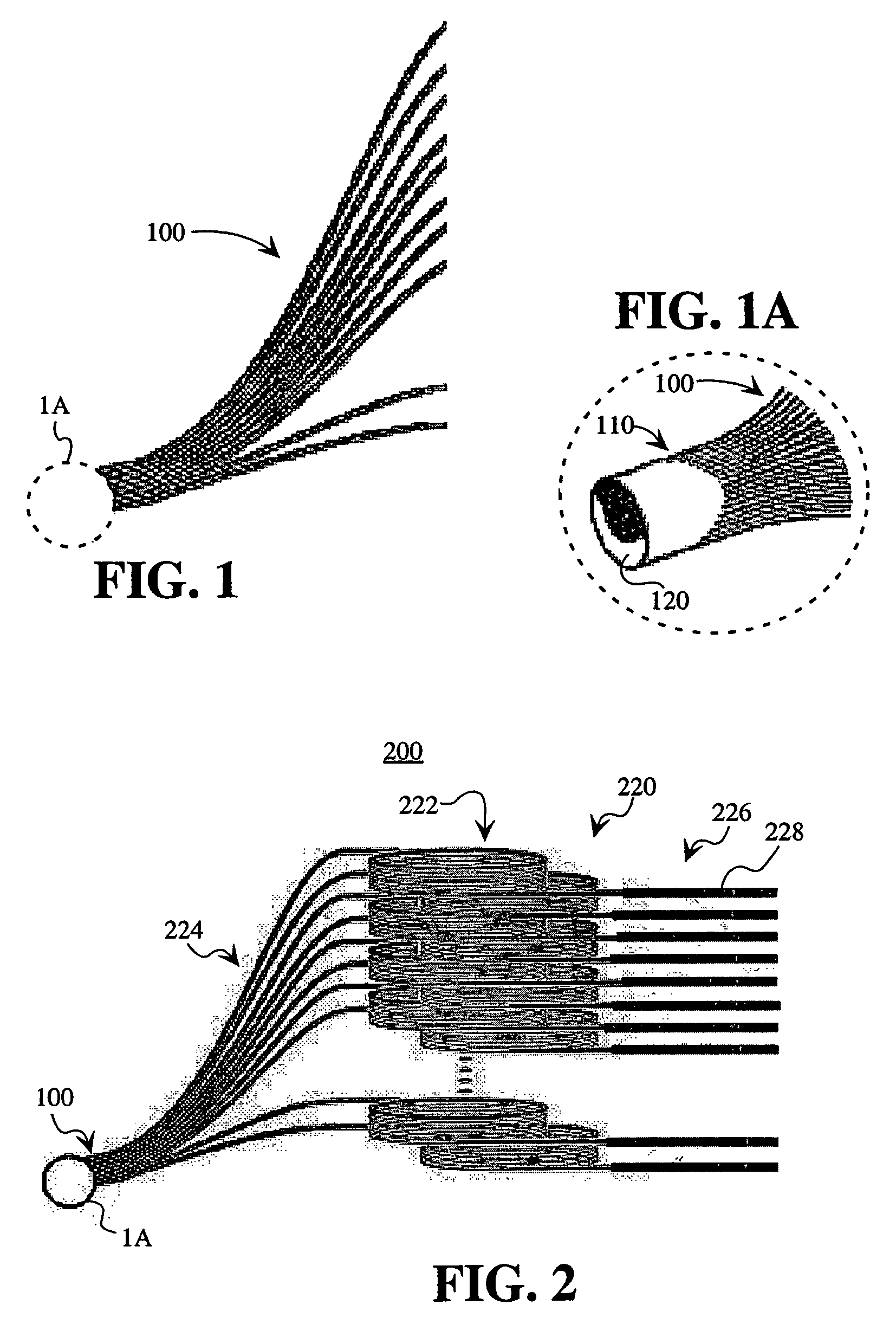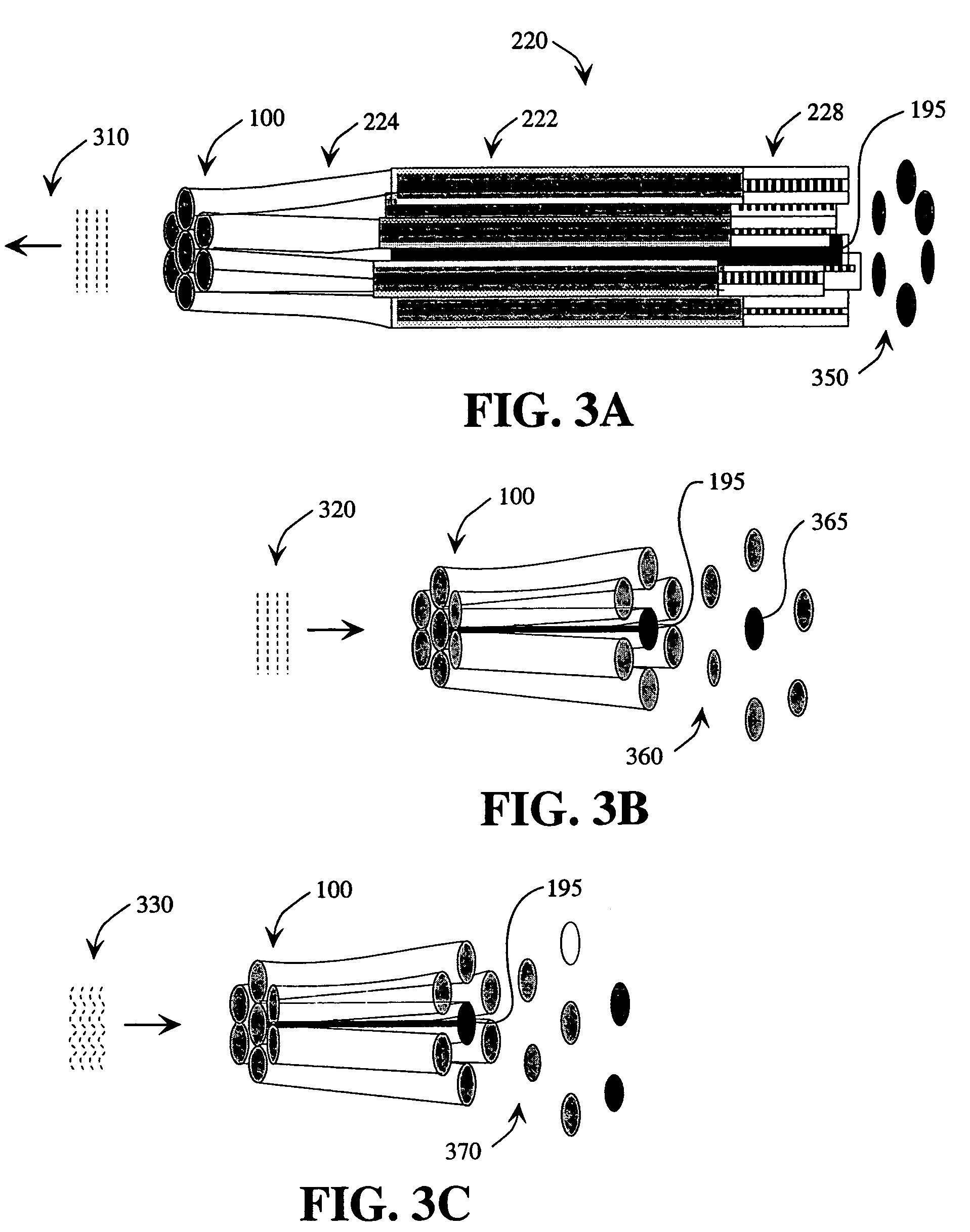Dark fiber laser array coupler
a technology of optical oscillator array and dark fiber laser, which is applied in the field of lasers, can solve the problems of increasing the complexity of the system disclosed by brosnan, the cost and difficulty of the apparatus described by abrams et al., and the relatively low power output of a single fiber laser without amplification or other power increasing techniques, so as to increase the losses of the composite laser array
- Summary
- Abstract
- Description
- Claims
- Application Information
AI Technical Summary
Benefits of technology
Problems solved by technology
Method used
Image
Examples
Embodiment Construction
[0041]The present invention will now be described more fully hereinafter with reference to the accompanying drawings, in which preferred embodiments of the invention are shown. This invention may be embodied in many different forms and should not be construed as limited to the embodiments set forth herein. Further, the dimensions of certain elements shown in the accompanying drawings may be exaggerated to more clearly show details. The present invention should not be construed as being limited to the dimensional relations shown in the drawings, nor should the individual elements shown in the drawings be construed to be limited to the dimensions shown.
[0042]FIG. 1 illustrates an optical coupler for use in embodiments of the present invention, in which the optical coupler 100 comprises a large bundle of regularly arrayed optical fibers 110. The optical fibers 110 are preferably single-mode fibers. The optical fibers 110 are fused at one end and stretched. The fused end is cut and poli...
PUM
 Login to View More
Login to View More Abstract
Description
Claims
Application Information
 Login to View More
Login to View More - R&D
- Intellectual Property
- Life Sciences
- Materials
- Tech Scout
- Unparalleled Data Quality
- Higher Quality Content
- 60% Fewer Hallucinations
Browse by: Latest US Patents, China's latest patents, Technical Efficacy Thesaurus, Application Domain, Technology Topic, Popular Technical Reports.
© 2025 PatSnap. All rights reserved.Legal|Privacy policy|Modern Slavery Act Transparency Statement|Sitemap|About US| Contact US: help@patsnap.com



